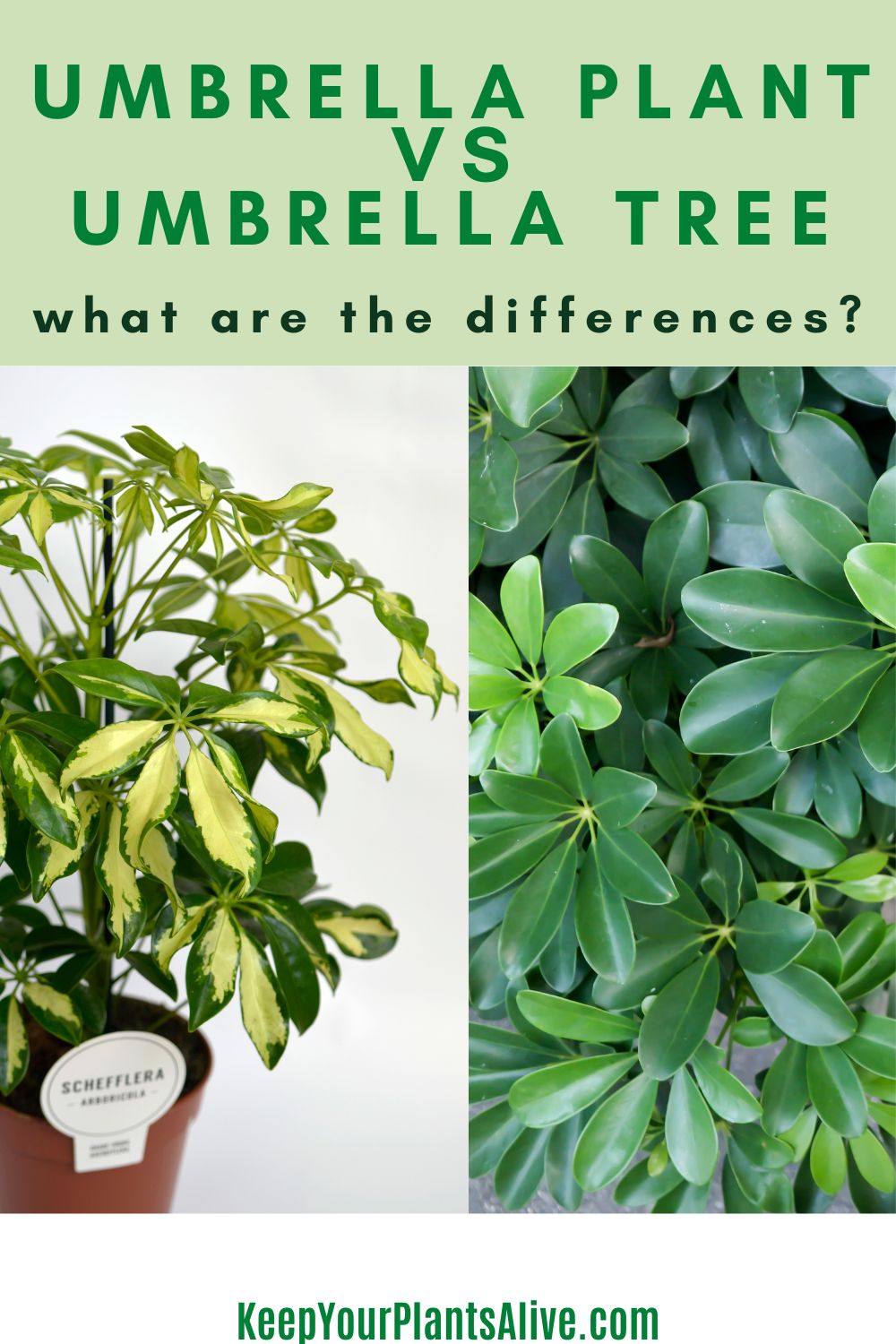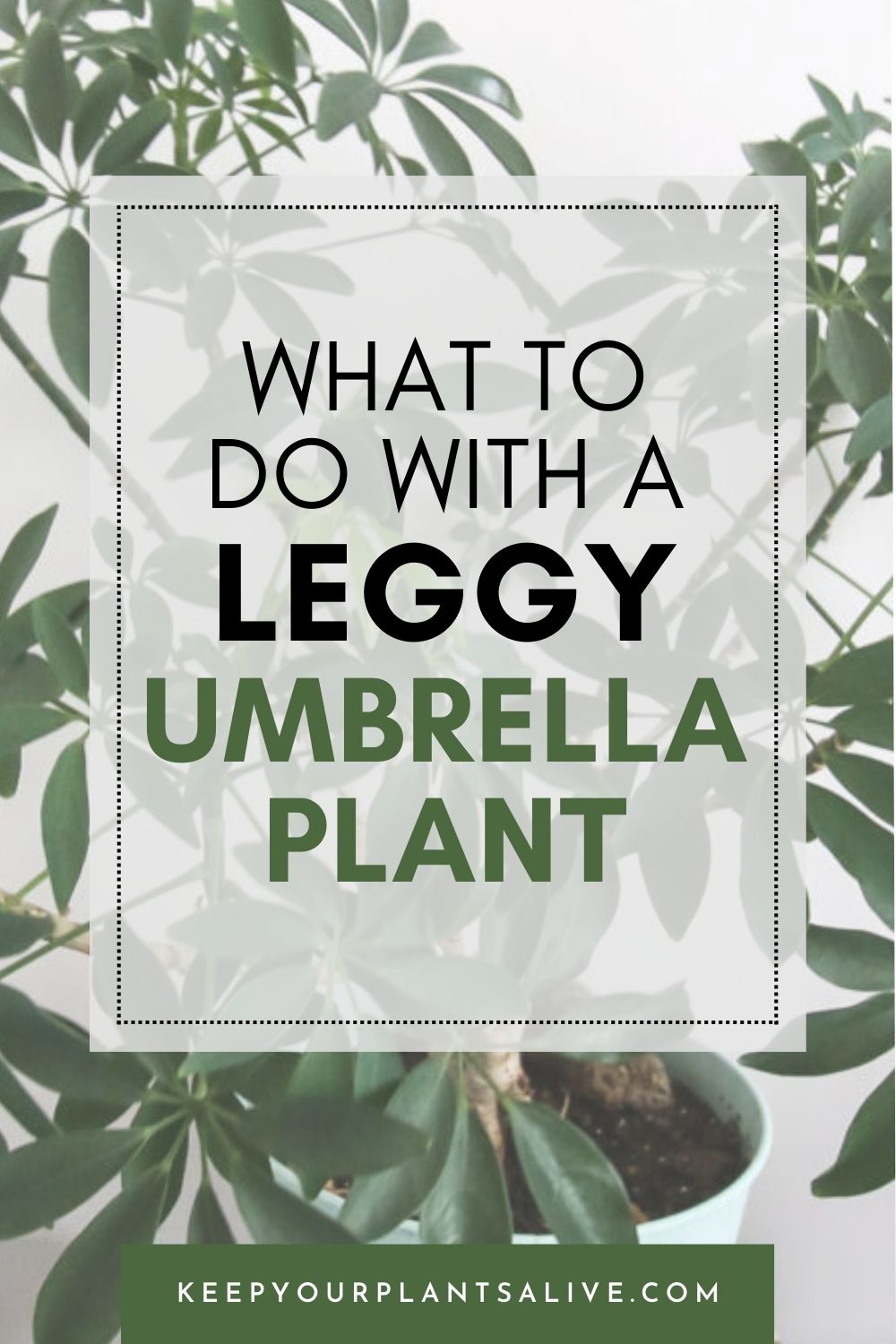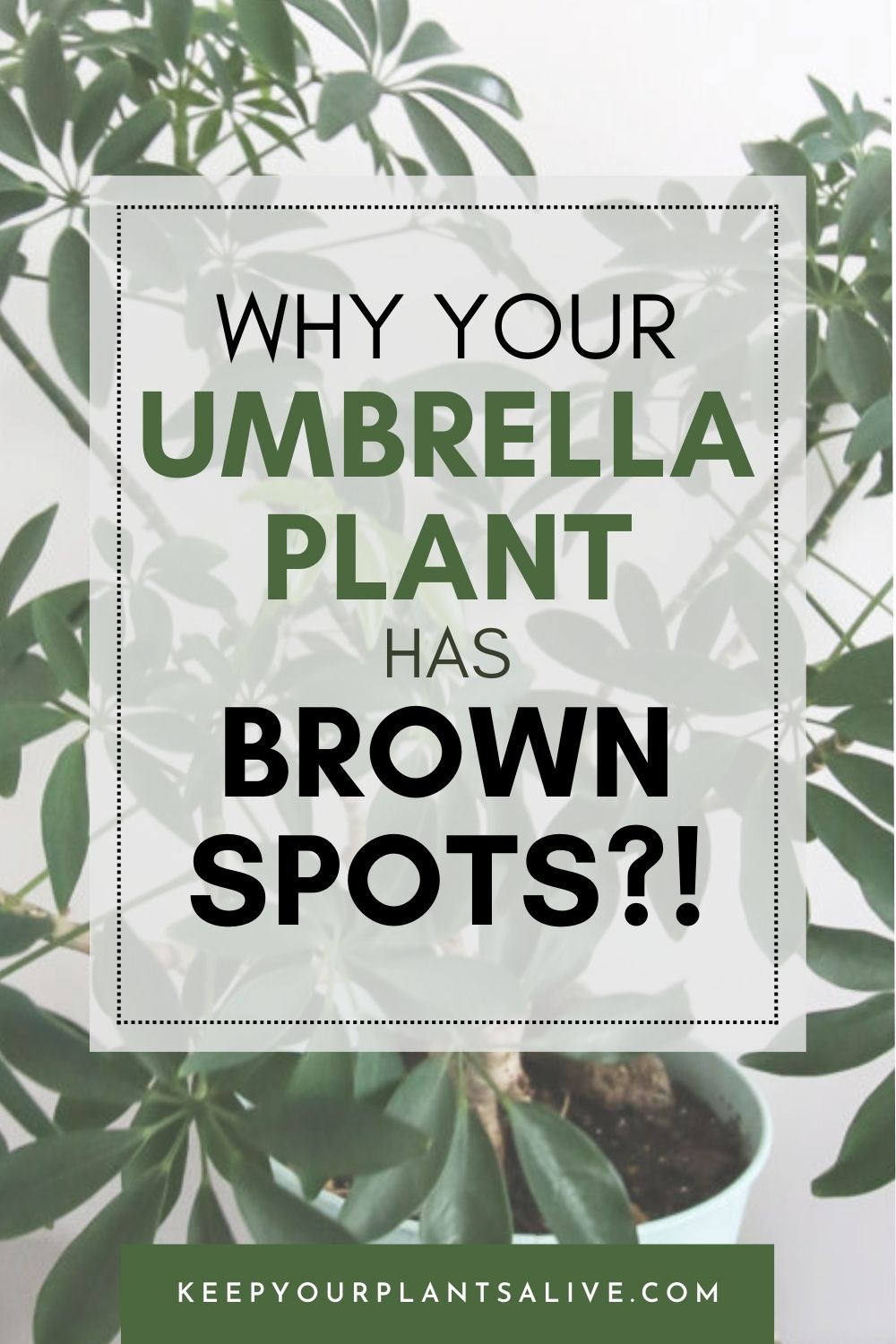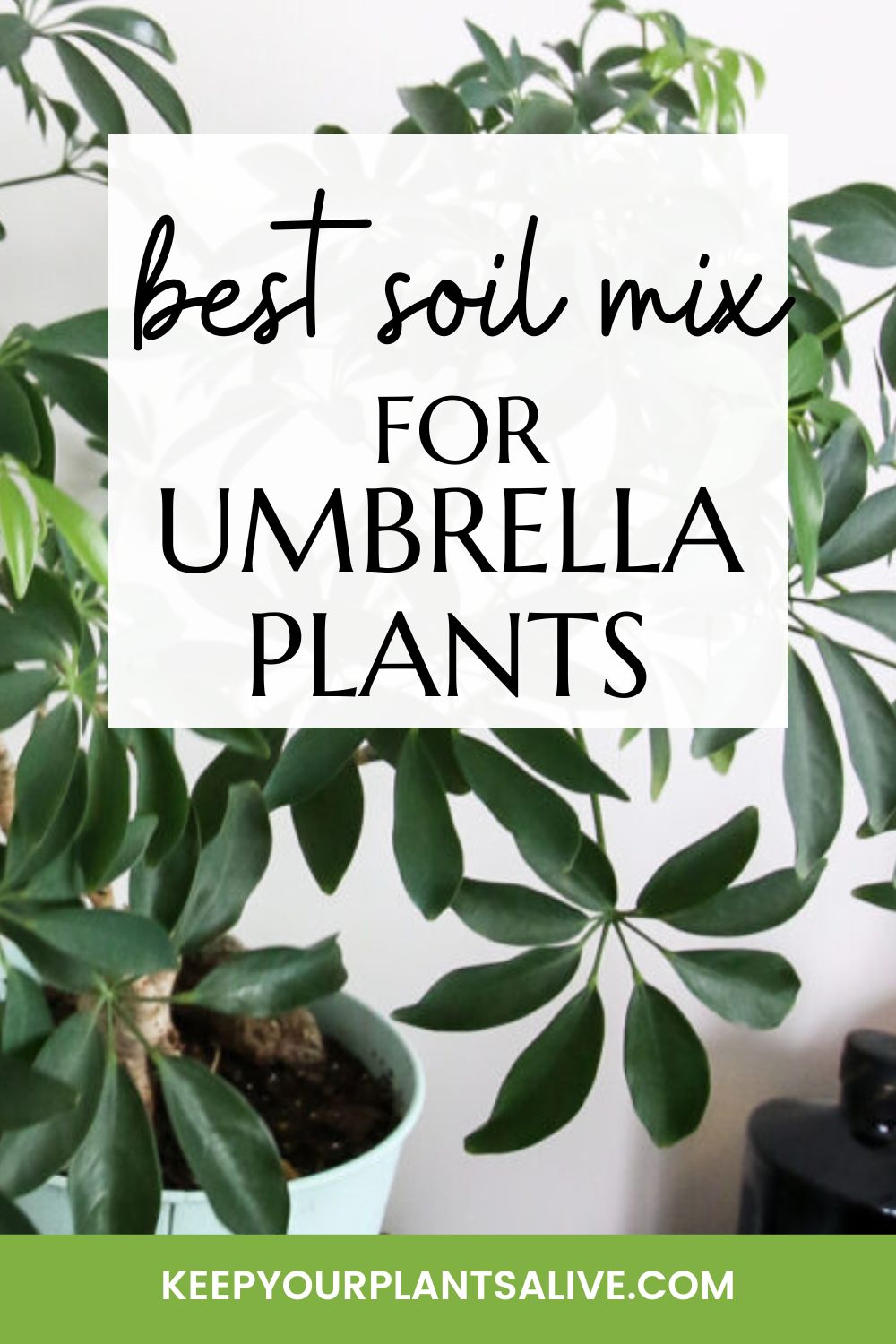Wondering if umbrella plants go dormant? Let's talk about Schefflera dormancy and how to care for a dormant umbrella plant!
One of the most popular houseplants nowadays is the Schefflera arboricola, commonly known as the umbrella plant.
It's not a surprise, with it's tree-like shape and clusters of long, tropical leaves, it's a really fun and unique looking plant for any collection.
But here is one popular question many plant parents ask- does the umbrella tree go dormant?
There is a specific resilience that is connected to this plant, making it one that grows all year long. However, some theories prove just the opposite! So, what is the truth, anyway?
To help you get to the answer, we’re delving deeper into the question and uncovering the incredible secrets the Schefflera plant hides! Keep reading to find out more!
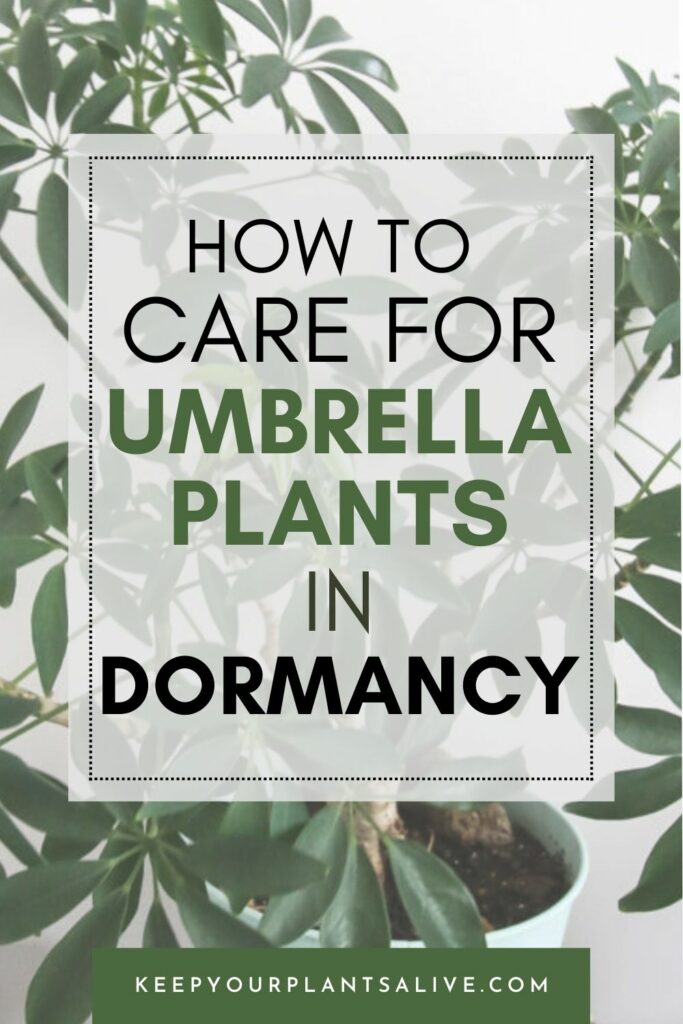
Want more umbrella plant content?
- Umbrella plant care guide
- How to propagate an umbrella plant
- Why is my umbrella plant dying?!
- Are umbrella plants toxic?
- When to repot an umbrella plant
- Can an umbrella plant live outdoors?
- Why is my umbrella plant dropping leaves?
- Why is my umbrella tree turning black?
- Why is my umbrella plant getting yellow leaves?
- Why are my umbrella plant leaves turning brown?
- Why does my umbrella plant have sticky leaves?
- Why is my umbrella plant wilting?!
- How to train your umbrella plant to grow in a specific direction
Printable Umbrella Plant care guide
Join the (free!) KeepYourPlantsAlive+ community to access this exclusive printable plant care guide! Once you sign up, you can right click & save the JPG care guide. Or keep scrolling for more!
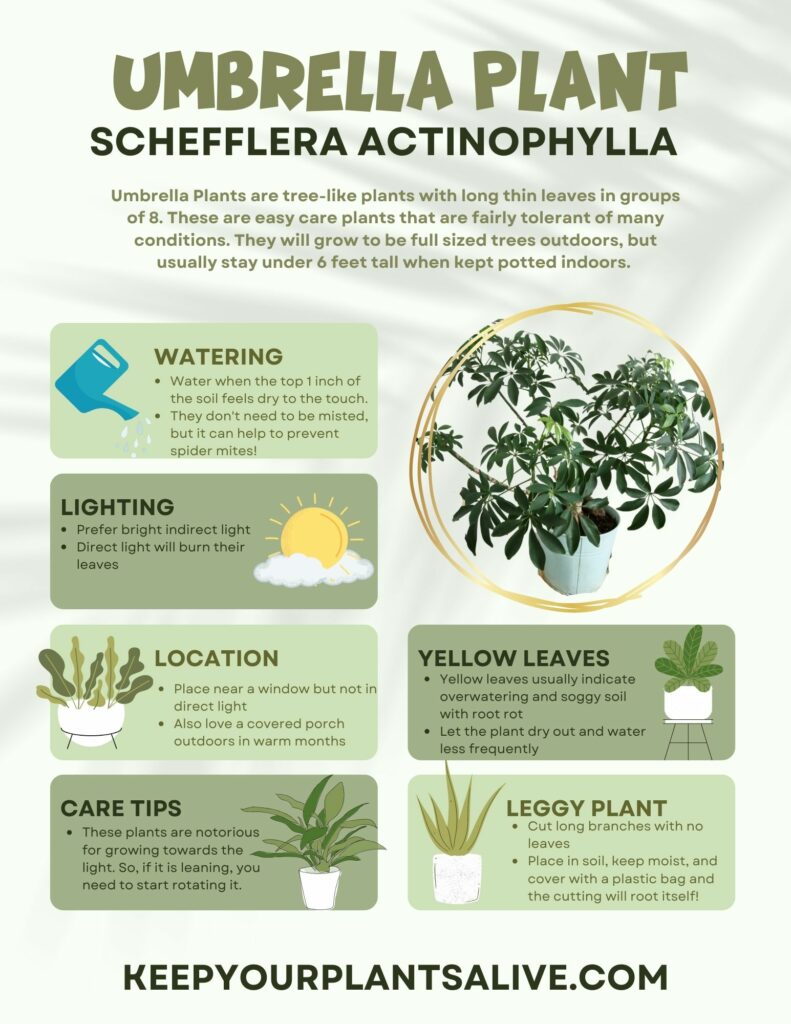
What is dormancy in a plant?
Before we talk about a particular plant, we need to define the term ‘dormant’. Dormancy is when a plant has decreased activity and stunted growth.
Dormancy mainly happens due to environmental stress. Every living organism on the planet, including bacteria, fungi, plants, animals, and even viruses, experiences dormancy at a certain point.
Some experts believe that not every plant needs dormancy to survive. But, it has been proven that this stage is oftentimes a critical part of the survival process of many.
What does dormancy do?
This is what it means when a plant goes dormant:
- The plant starts to preserve energy to survive, especially during drought or extremely cold weather. It is a way of protecting itself against extreme weather conditions.
- During this period, the metabolism of this living organism slows down and starts working at a bare minimum. The plant stops growing and stays in this state until the conditions improve.
- If you are keeping it as a houseplant, remember to give it plenty of nutrients during this time. They store these nutrients inside their roots, using them to stay alive.

Signs of umbrella plants going dormant
Umbrella plants tend to go dormant in colder, non-growing months. This is to conserve energy.
A few signs will tell you whenever your umbrella starts becoming a dormant plant. Although some of the signs can be difficult to spot, others are quite apparent.
Here is a list of things you can spot whenever your umbrella tree starts going dormant:
- The stems start to become dry and brittle
- The leaves start wilting and become yellow
- There are no new buds or new branches, and there is an overall stop in growth
- They stop blooming in vibrant colors – instead, you maybe get some withering leaves
- There is a large discoloration
- Leaves are smaller than usual
- The root starts to rot due to fewer nutrients
All of these indicate that your plant has entered its resting stage.
Remember that you can still do several things whenever you notice this is happening.
For example, you can increase sunlight exposure and stop watering the plant so often.
There are several other things you can do, which we discuss below.
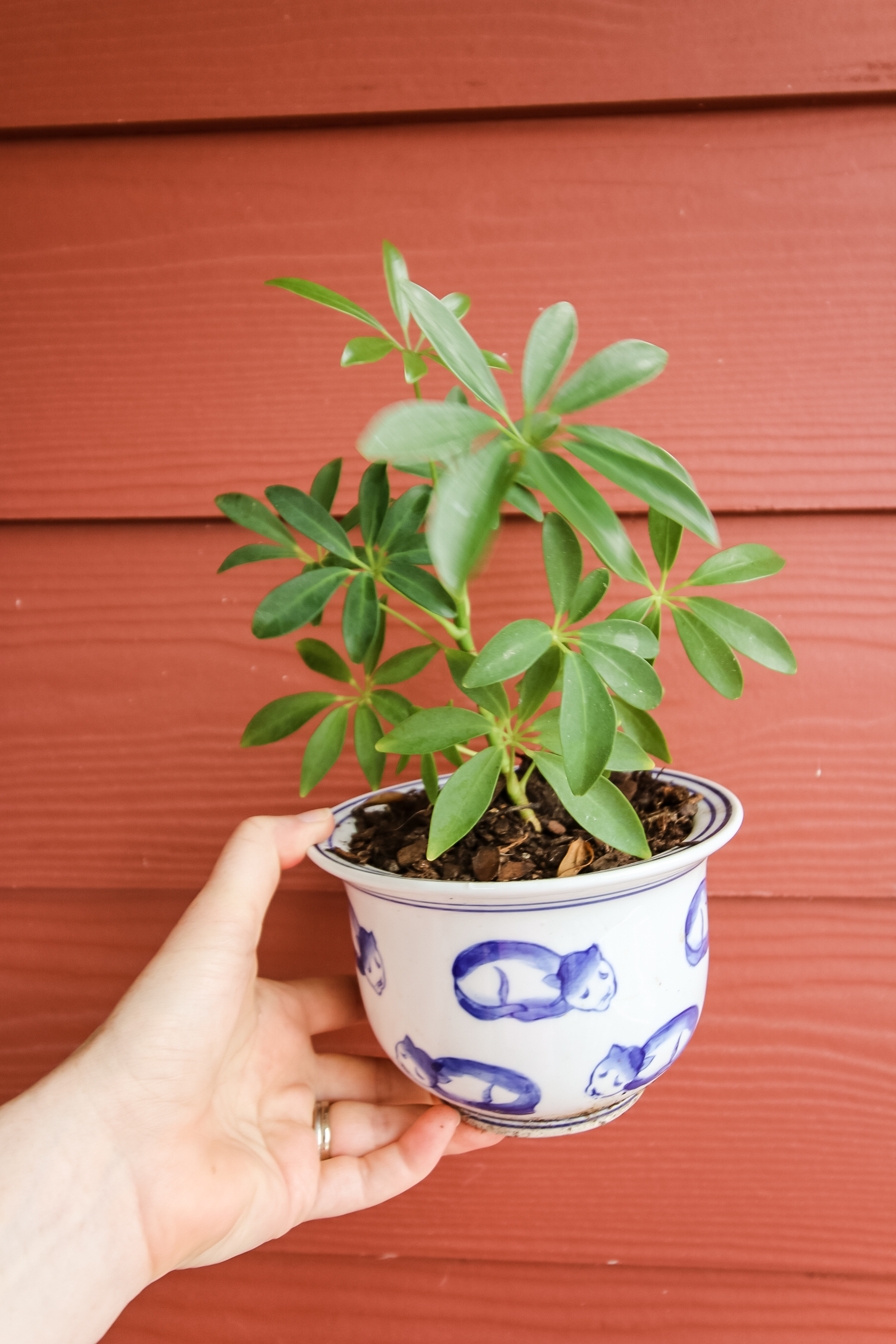
How to care for a dormant Schefflera plant
Whenever dormancy happens, giving the plant the care it needs is essential. During this period, the plant undergoes a lot of stress, and there are some things you need to pay attention to.
For example, we have just mentioned light and water requirements. They change during the dormancy period and are the first thing you need to remember to take care of.
Watering during dormancy
Instead of watering the plant like you usually do, stop watering them so often.
All you need to do is ensure the soil is a bit moist. Don’t let it completely dry out, as this can cause more stress to the plant.
Lighting during dormancy
Umbrella plants still need bright, indirect light even when dormant.
Fertilizing during dormancy
Do not fertilize a plant that is dormant.
Pruning during dormancy
Too much pruning can stress out the plant and create a flow of unfortunate reactions. Just skip it!
Humidity during dormancy
Last but not least, check the humidity levels as often as you can. If the humidity levels are too low, then the edges of the leaf will start to turn brown and curl up. On the other hand, too much humidity can contribute to a vast array of fungal diseases (which nobody likes).
Keep in mind that, for any umbrella plant, the ideal humidity level is between 40 and 60 percent.
Some other factors in your home can contribute to the larger stress of the plant, including temperature, air circulation, and more. Keep a close eye on your home's overall conditions to ensure your plant gets out of this phase unharmed.
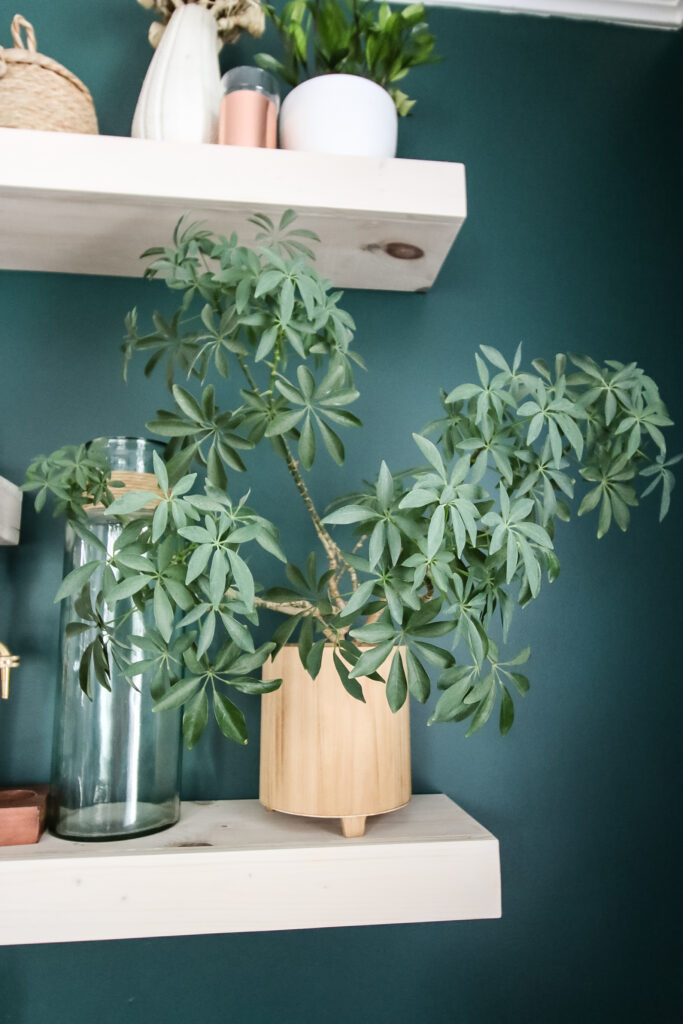
How long does dormancy last?
This plant doesn’t have a specific dormancy period. It all depends on the houseplant's age, the species, and the conditions it faces. If you want an estimate, the dormant period can last from a few weeks to a few months.
The time spent in this stage can only be calculated by the temperatures and the plant's exposure to light.
Keeping that in mind, some younger plants have shorter dormancy periods than some older plants. It is all because of their roots – while they are still developing, they need less time to recover. Much like every other living being, right?
Understanding the patterns of a dormant plant can give you an insight into how this marvelous houseplant thrives.
All you need to do during this period is make some slight adjustments. It is your way of showing support and letting your umbrella plant thrive.
And, once the period is over, it will come back thriving!
Any more questions about dormancy in umbrella plants?
Thanks for reading!


Hey there, I'm Morgan, a houseplant enthusiast from sunny Charleston, South Carolina. Growing up surrounded by my mom's lush orchids and African violets, I discovered the magic of bringing nature indoors. Thanks to the pandemic, I delved deeper into houseplants, discovering their power to uplift moods and transform spaces. I'm here to spill all my secrets, helping you pick the perfect houseplant - and make it happy. Let's keep your plants alive, together! 😊

